Every college head coach or coordinator enters the season with a stock valuation.
Fans are buying or selling, or waiting to see more before making an investment decision. The nature of the offseason, when no team has lost a game, creates a bullish view of most coaching stocks.
Seven weeks of college football games can change things.
A coaching stock reset is in order. Most teams are past the halfway point of the season, and the jobs carousel is starting to churn. This piece focuses mainly on the coaches and coordinators who have improved their stock since the games began. Some coaching stocks already were fairly high but have continued to ascend, while other coaches have boosted their profiles significantly.
Another group of coaches also seemed to be on the rise, but have fallen off, and they are cited below as well.
I used my preseason list of ascending coaches as a guide but didn't limit the list to those names. Although coaches are listed with the upcoming jobs carousel in mind, not every coach with a rising stock will move up, nor will every coach with a descending stock lose his job.
Let's get started.
Stock rising: Power 5 head coaches
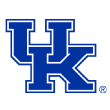
Mark Stoops, Kentucky: Stoops' team took its first loss of the season Saturday, but Kentucky came into Sanford Stadium to face No. 1 Georgia riding its first 6-0 start since 1950, when Bear Bryant coached the team. Although Stoops had gained respect within coaching and administrative circles for the success and stability he brought to Kentucky, he had won more than seven games just twice in the previous eight seasons. The Wildcats still have a chance for their second 10-win season in the past four. Stoops (55-51 overall at Kentucky) might not be an A-list candidate for LSU, but he would be a good choice there. He might make even more sense at Penn State if James Franklin departs for another job.

Mel Tucker, Michigan State: Tucker is on the short list for national coach of the year awards after engineering an incredible turnaround with help from the transfer portal. A Michigan State team that had five double-digit losses in Tucker's first season sits at 7-0 and ranked ninth in his second. After years as a top NFL and college assistant, Tucker has validated himself as a program leader and talent evaluator. While many teams try to improve through the portal, few have succeeded like the Spartans. Tucker left Colorado for MSU after only one season and may be hesitant to move again so quickly. But he's also worked at some of college football's premier programs (LSU, Ohio State, Alabama, Georgia) and in the NFL. Industry sources expect Tucker to gain at least some consideration for the LSU job.

Dave Clawson, Wake Forest: Like Stoops, Clawson has long been respected in the industry for winning consistently at one of the toughest Power 5 programs. He also hasn't had many breakthrough seasons, with four campaigns of seven or eight wins since 2016. But Wake Forest is 6-0 for the first time since 1944, and has a good chance to reach its first ACC championship game since 2006. Wake's up-tempo offense, keyed by delayed mesh-read runs, is averaging 38.7 points per game, and its defense has played better this year. The Demon Deacons also lead the FBS in special teams efficiency. The 54-year-old Clawson could end his career at Wake Forest, but he has put himself in position to gain legitimate consideration from other programs.
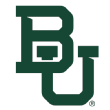
Dave Aranda, Baylor: There's a reason Aranda became the nation's highest-paid coordinator at LSU. He built an impeccable reputation as a defensive playcaller and scheme designer. But there were questions about his head-coaching abilities after a challenging first season at Baylor. Few teams seemed to be impacted more consistently by COVID-19, as Baylor never truly got on track and went 2-7. Aranda is now showing what he can do in a normal season with a team that knows him. Baylor is 6-1 with two home wins against top-20 opponents (Iowa State, BYU). The defense looks very solid, and an offensive coordinator change to Jeff Grimes is paying off very well. Aranda likely isn't leaving Baylor any time soon, as the school has the money and desire to keep him. But he has connections to both major coaching vacancies (LSU and USC).
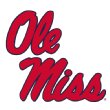
Lane Kiffin, Ole Miss: There are certain boxes Kiffin will always check, from general entertainment to superb playcalling and quarterback development. His first year at Ole Miss was fun, even if the team wasn't particularly good. The question with Kiffin remained whether he could elevate his program closer to a championship level. Ole Miss isn't quite there, as the Alabama game showed, but the Rebels are much closer this season. They remain dynamic on offense, especially with quarterback Matt Corral, but also can win games in different ways, as they showed Saturday at Tennessee. Kiffin's history suggests another coaching move will happen. Would LSU look his way? An intriguing possibility is Miami, if the school lets Manny Diaz go. Kiffin loved his time in South Florida as Florida Atlantic's coach.
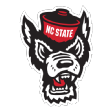
Dave Doeren, NC State: Doeren has had a few near breakthroughs at NC State, but a poor ACC record always seems to hold back his teams. He even had some job pressure after a 4-8 mark in 2019. But since that season, NC State is 13-5 and, more importantly, 9-3 in ACC play. Doeren's team finally got over the hump against Clemson and recorded an impressive 33-7 road win against Boston College on Saturday. While Doeren likely will continue to build at NC State, a sneaky good Power 5 job, he also could look to restart his clock elsewhere. The 49-year-old from Kansas spent most of his career in the Midwest before coming to NC State, but also spent two years as a graduate assistant at USC.

Jonathan Smith, Oregon State: Smith is an ideal fit at Oregon State, which he quarterbacked to national prominence in 2000. But he needed to show something in Year 4 after the team backslid, at least recordwise, during the pandemic-shortened 2020 season. After a tough opening loss at Purdue, Oregon State won four straight, including consecutive wins over USC and Washington. The USC win marked Oregon State's first in Los Angeles since 1960. Despite an Oct. 9 loss to Washington State, the Beavers are clearly making strides on both sides of the ball. Smith's offensive structure and steady leadership is working in Corvallis. He also is missed at his last employer, Washington, which has fallen off sharply on offense since his departure as coordinator.

Pat Narduzzi, Pitt: Before this season, the Narduzzi era had been defined by some big wins (Clemson and Penn State in 2016) and some maddening losses. Although Pitt had one of the latter against Western Michigan on Sept. 18, it has otherwise looked like a bona fide ACC title contender. Senior quarterback Kenny Pickett has been brilliant, passing for 1,934 yards with 21 touchdowns and only one interception. Narduzzi has never won more than eight games with the Panthers, but certainly could break through this season. While he's very happy at Pitt, he would be an interesting name at Michigan State if Tucker left. Narduzzi served as MSU's defensive coordinator from 2007 to 2014.
Stock rising: Group of 5 head coaches

Jeff Traylor, UTSA: There was some quiet optimism around Traylor after he went 7-5 in his first year at Texas San Antonio, despite the pandemic and some other challenges. But he has stamped himself as a coach to watch this fall, guiding the Roadrunners to a 7-0 start and a top-25 ranking. UTSA hasn't been dominant but has won games in different ways, and owns road wins over Memphis and Illinois. Traylor's immediate success at UTSA and deep roots in the Texas high school ranks make him an appealing Power 5 candidate, especially for potential Big 12 vacancies such as Texas Tech. As Traylor told me earlier this month, he still considers himself a high school coach, but he has adjusted very well to leading a college program.

Luke Fickell, Cincinnati: Fickell needed no stock bump after leading Cincinnati to 31 wins in the previous three seasons. He had proved enough to any Power 5 suitor about his skills. But Fickell has taken his profile to another level, giving No. 2 Cincinnati a real chance at becoming the first Group of 5 team to crack the College Football Playoff. Fickell recorded a signature road win against Notre Dame, ending a 26-game home win streak for the Irish. Fickell could be on the radar for USC, since athletic director Mike Bohn hired him at Cincinnati. But he might be better off staying at Big 12-bound Cincinnati or waiting out a premier job in the Midwest or Mid-Atlantic. He would be a good choice at Penn State if Franklin departed.

Jamey Chadwell, Coastal Carolina: No FBS program and coach bolstered their national perceptions more than Coastal Carolina and Chadwell in 2020, when the mullet-loving Chanticleers went 11-1 and finished No. 14 nationally. The encore would be key, as Coastal Carolina entered the fall ranked 22nd and carrying unprecedented expectations. Chadwell's veteran team has delivered with dominance, starting 6-0 and outscoring opponents 293-90. After receiving some fringe Power 5 consideration last year, Chadwell will be a top candidate to move up in this cycle and potentially beyond. Despite a lack of Power 5 experience, his combination of creative offense and culture-building is exactly what many athletic directors are seeking.

Sonny Dykes, SMU: Dykes is another Group of 5 coach who has built on an already strong stock this season. In fact, if Texas wasn't set on hiring Steve Sarkisian to replace Tom Herman, Dykes would have had a good chance at that job last offseason. He has the Mustangs at 6-0 heading into Thursday night's game against Tulane. Since the start of the 2019 season, SMU is 23-6. Dykes was a bad fit at Cal, and will only leave a great situation at SMU for one that suits his personality and style. Although he has strong ties to Texas Tech, where his father, Spike, coached from 1986 to 1999, he could target potential openings such as Arizona State.

Brady Hoke, San Diego State: Success at San Diego State is nothing new, but the Aztecs are 6-0 for the first time since 2017 and own two wins against Pac-12 opponents (Utah, Arizona). In the second year of his second stint as San Diego State's head coach, Hoke has kept up the surge he started and that Rocky Long continued. The Aztecs are winning with a formula -- heavy run offense and stout defense -- that Hoke tried to deliver at Michigan. Although Hoke likely isn't leaving San Diego State, he has kept the program on a steady trajectory following Long's departure.

Dana Dimel, UTEP: Dimel and the Miners are one of the nation's best under-the-radar stories. UTEP is 6-1, and bowl-eligible for the first time since 2014, after winning just five games total in the previous four seasons. The Miners are off this week, and if they get past Florida Atlantic on Oct. 30, they will host UTSA on Nov. 6 in a huge Conference USA matchup. Dimel, 59, likely isn't getting a big-time head-coaching job, but his accomplishments are notable at one of the toughest programs in the FBS. The former Houston and Wyoming coach had three winning seasons at Wyoming in the 1990s but never made a bowl game.

Jay Norvell, Nevada: Anyone who reads my previous coaching lists knows I think Norvell is long overdue to be a Power 5 head coach. The wait should be over soon, especially if Nevada builds on its 5-1 start and challenges San Diego State and others for the Mountain West title. Norvell is 27-14 since the start of the 2018 season. He has developed a top quarterback at Nevada in Carson Strong, and the Wolf Pack have improved a lot on defense. Norvell has Big Ten roots but also has coached extensively in the Big 12 and Pac-12, and could make sense for almost any vacancy in those leagues (including Washington State).

Kalen DeBoer, Fresno State: Like Norvell, DeBoer has been mentioned frequently in these lists as an under-the-radar star in coaching. He's a bit more known after Fresno State's thrilling win at UCLA on Sept. 18. The Bulldogs also pushed Oregon in the Ducks' season opener before falling by a touchdown. DeBoer is a top offensive architect who has a strong history of developing quarterbacks, most recently Jake Haener. He had incredible success at NAIA school Sioux Falls, going 67-3 with three national titles. DeBoer has brought that success to the FBS and should soon be getting calls for Power 5 jobs.

Thomas Hammock, Northern Illinois: Hammock entered Year 3 at his alma mater needing to show some tangible progress. The COVID-19 year brought an 0-6 record for NIU, which seemed to be slipping further away from its days of dominating the MAC. Hammock had strong ties to the program as a former player and assistant, but wasn't on the head-coaching radar anywhere else when Northern Illinois hired him in January 2019. But Hammock has answered the skepticism this fall, as NIU sits at 5-2 and 3-0 in the MAC West Division. The Huskies have road wins over Georgia Tech and Toledo, and should be heading to a bowl game for the first time since 2018.
Stock rising: FBS coordinators
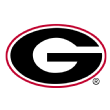
Dan Lanning, Georgia: Defense has been a bigger story around college football this season, and no unit is playing better than Lanning's at Georgia. The Bulldogs' defense has gone from excellent to historically elite this fall. Its 46 points allowed through seven games matches the fewest in the same span by any team in the past 25 years (Ohio State also allowed 46 in 2007). Lanning, 35, started to get some attention in coaching searches during the past cycle, and should be a very hot name this coming winter. He has been with Kirby Smart at Georgia since 2018, but also has made stops at Memphis and Arizona State.
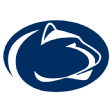
Brent Pry, Penn State: Pry is a veteran playcaller who has worked alongside James Franklin at both Vanderbilt and Penn State. He's currently coaching his best defense with the Nittany Lions, who allow only 13.8 points and 311.7 yards per game, and shine in the red zone. Pry has developed NFL-level talent for years at Penn State and supplemented the defense with strong transfer additions such as Temple's Arnold Ebiketie. Pry, 51, is a Pennsylvania native but had stints at Georgia Southern, which is looking for a coach, and at Louisiana, which might be if Billy Napier moves on. His ties to the Southeast, South and Mid-Atlantic make him a potential candidate for a range of jobs.
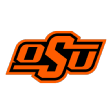
Jim Knowles, Oklahoma State: I love how Mike Gundy picks his coordinators, not worrying about name recognition or fan reaction and simply selecting who he thinks will fit best in Stillwater. Gundy's hire of Knowles from Duke didn't generate much attention, but smart coaches noticed and thought it was a shrewd move. Knowles has made defense the signature unit in a program known for quarterbacks, receivers and running backs. Oklahoma State's points and yards allowed totals improved in each of Knowles' first three seasons, and the Pokes led the nation in third-down conversion percentage (26.5) last fall. Oklahoma State is allowing just 19.5 points and 307.2 yards per game this season, and the defense ranks in the top 10 nationally in third-down conversions against, defensive touchdowns and tackles for loss. Knowles, 56, might not be on the radar for head-coaching positions, but he has done an excellent job for Gundy and Oklahoma State.

Jeff Grimes, Baylor: The Bears' offense stalled in Aranda's first year, averaging only 23.3 points per game, and veteran quarterback Charlie Brewer transferred out. Aranda replaced Larry Fedora with Grimes, who helped BYU rank third nationally in scoring in 2020. Baylor now ranks 16th nationally in scoring (38.3 points per game) and has improved its yards-per-play average from 126th nationally (4.44 ypp) all the way to fourth (7.29 ypp) this fall. Quarterback Gerry Bohanon has blossomed under Grimes (12 touchdown pases, one interception), and Baylor is balanced with 238.3 rush yards per game. Grimes, a Texas native who has worked around the country, should be a head-coaching candidate for Group of 5 openings this year.
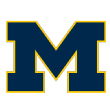
Josh Gattis, Michigan: Gattis left Alabama and Nick Saban, college football's kingmaker with assistant coaches, in 2019 for a chance to call plays at Michigan. But before this season, Gattis' "speed in space" mantra hadn't really taken off in Ann Arbor. Now the Wolverines are rolling, featuring one of the nation's most efficient offenses. Michigan ranks 14th nationally in scoring, seventh in rushing and sixth in efficiency. After leaning heavily on the run game early on, Michigan has gradually shown more of a spark in its pass game. Gattis always seemed like one strong season away from boosting his head-coaching candidate profile. The market lacks young Black offensive play-callers who have worked at major programs.

Brad White, Kentucky: White and Stoops have built Kentucky into one of the more respected defenses in the SEC. The Wildcats allow fewer than 20 points per game and are solid against the run. White, who came to Kentucky from the Indianapolis Colts, has developed All-American Josh Allen, Jamar "Boogie" Watson and other standouts, such as current defensive end Joshua Paschal. He could soon be in the mix for FBS head-coaching jobs or NFL coordinator positions.

LeVar Woods, Iowa: Woods is the only special teams coordinator included here, just as he was on my preseason list. Iowa's special teams are a huge reason the Hawkeyes rose to No. 2, their highest AP ranking since 1985, before falling last week against Purdue. Woods is responsible for finding standout punter Tory Taylor in Australia, and Iowa's return and coverage units have been generally excellent. Iowa ranks sixth nationally in special teams efficiency and second behind Wake Forest in expected points added through special teams. Although Woods has spent his entire career at Iowa, he could be an intriguing and capable candidate for Group of 5 head-coaching positions this year.
Stock dropping
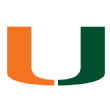
Manny Diaz, Miami: Diaz came into the season looking like the man who could finally stabilize Miami, his dream job. He had been Hurricanes defensive coordinator in 2017, when the team went 10-3 and finished No. 13 in the country. Diaz had Miami in the top 20 for most of last season, and the team was primed for the next step. Instead, Miami has backslid considerably, and sits at 2-4. The Canes have been hit with some tough injuries, especially on offense, but the player development that fans hoped to see with transfers and prep recruits simply isn't there. Diaz reclaimed defensive playcalling duties, but Miami is allowing 30 points per game. He wants more time to recruit but might not get it. Miami has dropped six straight to Power 5 opponents.
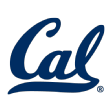
Justin Wilcox, Cal: Wilcox had Cal in great shape after the 2019 season, as the team had reached consecutive bowl games, notched some signature wins and had a good quarterback (Chase Garbers) returning. Then, the pandemic hit, and arguably no Power 5 team has been more negatively impacted than the Bears. Cal is 2-8 over the past two seasons, dropping five of six Pac-12 contests. Four of Cal's five losses this season have come by seven points or fewer, continuing a trend of narrow defeats that started in 2020. Wilcox's offensive coordinator hires have been questioned, and he might need to make staff changes again this offseason. He should get at least another year to get things right in Strawberry Canyon.

Neal Brown, West Virginia: After a 6-4 season in 2020, West Virginia seemed close to breaking through this fall. The Mountaineers returned one of the Big 12's best defenses and a rushing attack led by veteran back Leddie Brown. If Neal Brown could bolster the quarterback play, which he has done for most of his career, WVU looked like a sleeper candidate in the league. Instead, the Mountaineers sit at 2-4 and are winless in Big 12 play. They have scored a total of 53 points in losses to Oklahoma, Texas Tech and Baylor, and quarterback Jarret Doege has five interceptions. Brown is sharp enough to get things back on track, but Year 3 has not gone well at all.

Jimmy Lake, Washington: Lake made sense as Chris Petersen's successor, despite having no previous head-coaching experience. He had a major role in Washington's ascent under Petersen, especially in recruiting and producing draftable defensive backs. But skepticism is growing about Lake's viability. After a 3-1 record during the pandemic-shortened 2020 season, things have turned ugly in Montlake. The Huskies dropped the season opener to FCS school Montana, their first loss to the Grizzlies since 1920. Washington is 2-4 and in danger of not being bowl eligible for the first time since 2009. The Huskies rank 101st nationally in scoring, and Lake's odd hire of offensive coordinator John Donovan has been heavily scrutinized.
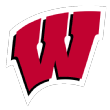
Paul Chryst, Wisconsin: The Wisconsin machine looks a bit shaky these days, at least on offense, which had been Chryst's speciality. After going 52-16 in his first five seasons with two top-10 finishes and three Big Ten West Division titles, Chryst is just 7-6 (4-5 Big Ten) the past two seasons. Remove a blistering start to the 2020 season, and Wisconsin has looked ordinary or worse. Graham Mertz, the most decorated quarterback recruit in team history, has mostly struggled, and Wisconsin ranks 117th nationally in passing and 115th in scoring this season. Chryst has reclaimed offensive playcalling duties this year, so the unit's continued struggles from late last season fall on him. He's not facing any job pressure but needs to get things figured out soon.

Jason Candle, Toledo: Candle appeared on my preseason "coaches to watch" list and has been there for several years. He always seems like one really good year away from moving up into a Power 5 job. But the momentum from early in his Toledo tenure has slowed considerably. Since an 11-3 mark in 2017, Toledo is just 20-18 overall and 3-4 this season. Toledo's 32-29 loss at Notre Dame -- a game Toledo led with 1:35 left -- seems to have had a hangover effect. The Rockets still could finish strong, but there are some doubts about when Candle's program will challenge for a MAC title.

Tony Elliott, Clemson offensive coordinator: For years, Elliott's name headlined lists of top coordinator candidates for Power 5 jobs. He could be leading his own major program by now, but he has elected to remain in a comfortable and familiar environment. Many schools still might jump at the chance to hire the playcaller for two national championship teams. But Elliott's profile has taken a hit this year, as Clemson doesn't look remotely the same on offense. The Tigers rank 113th nationally in scoring, 109th in yards per play and 107th in passing. Elliott's running back room, bolstered for years by Travis Etienne, is suddenly thin. The same goes for the receiving corps. Some industry sources wonder if Elliott stayed at Clemson too long. He should still be able to land a good Power 5 job but might have to wait a year to rebuild his stock.
